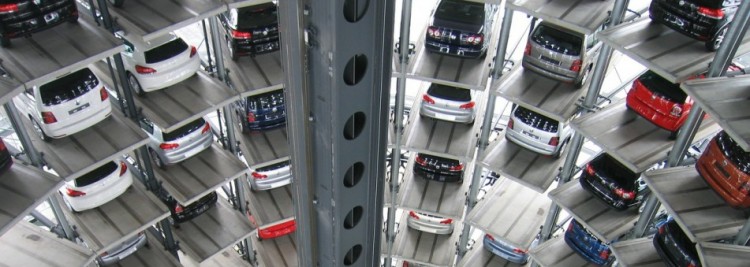Google may be the first name associated with driverless cars, but they’re not the only ones interested in the technology. More importantly, it seems people have wildly different opinions on exactly how the story will play out. How much data will these cars produce? What kind of legal quandaries will we face? While the details are hazy, there is no doubt these machines will not only be available in the near future, they will soak up data like a sponge, and put that information to use both inside the car and out.
When a passenger loves their car very much, they go on trips. Of course, for a driverless car, it can be a little hard to see the road. This is why they are loaded with sensors. They may be equipped with Laser Illuminating Detection and Ranging, like Google cars, which are used to build a 3D map of the surroundings. It can see lines on the road to know where the lane is, or notice that a light has turned red. Now the car can see, but what about those other cars zooming about? How can a driverless car avoid a fender bender? Once the car is equipped with radar units the car can see just how fast the surrounding objects are moving.
There are three main hardwares in the driverless car model: sensors, processors, and actuators. Images and information gleaned from sensors travel through the processor, which effectively tells the car what to do via actuators—tools that allow a computer to control physical components like brakes, or steering wheels.
 Certain kinds of data can also come from other cars. Your little car is not alone on this journey from toddler-brained-automobile to futuristic sci-fi car. Data from other cars is also used to better map environments. If cars were to process the image of a new stop sign put in place, that data would eventually become part of the overall mapping system. Thanks to cloud access, the car is always connected and, ideally, up-to-date.
Certain kinds of data can also come from other cars. Your little car is not alone on this journey from toddler-brained-automobile to futuristic sci-fi car. Data from other cars is also used to better map environments. If cars were to process the image of a new stop sign put in place, that data would eventually become part of the overall mapping system. Thanks to cloud access, the car is always connected and, ideally, up-to-date.
These cars aren’t just lumps of smart technology; they’re the result of learning algorithms, and catalogued information based on previous experience. It’s the incredible software in place that models responses and behaviors in real time. The more the car, or computer, drives, the more it knows. This doesn’t mean you have to educate your car. Rather, the problem is in the very specific split-second decisions that drivers make every day. Scientists can’t possibly program a car to recognize every little objects and how to act in every situation. A car may not inherently know the difference between a glass bottle or a newspaper, but by absorbing more data through driving and real experience, it may learn. It may learn that items in the road will cause other drivers to swerve, or how to anticipate when a driver will change lanes.
By turning driver experiences into programmable information, scientists can also make driverless cars much more practical. The ability to relay all kinds of data at once doesn’t necessarily equal the perfect car. There don’t need to be flashing lights every time another car brakes; it shouldn’t brake every time a bird is in the street. The results would be overwhelming. There is a multitude of background noise that drivers tune out to focus on what is vital. That’s why data science is necessary to determine what is and isn’t important. These cars use predictive and prescriptive models to deal with the influx of sensory information in a practical way.
To read more : http://dataconomy.com/how-data-science-is-driving-the-driverless-car/



/http%3A%2F%2Fpbs.twimg.com%2Fcard_img%2F1303144707619532801%2F3-iTleij%3Fformat%3Djpg%26name%3Dsmall)
/http%3A%2F%2Fwww.autonomousvehicleinternational.com%2Fwp-content%2Fuploads%2F2020%2F08%2FFord-Michigan-Science-Center-1.jpg)
/http%3A%2F%2Fcleantechnica.com%2Ffiles%2F2020%2F07%2FFaurecia-Cockpit-of-the-Future-Autonomous-Cars-Wellness.jpg)
/http%3A%2F%2Fcdn-images-1.medium.com%2Fmax%2F800%2F1%2AAr3L_tI2Ow54sCoDmcfnmg.jpeg)
